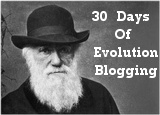Another abstract will have to do for today's extremely delayed installment; the grant proposal leaves my desk tomorrow, so I hope to be back in business as soon as my neck recovers from days of hunching over the laptop.
Today's paper, Sequencing human–gibbon breakpoints of synteny reveals mosaic new insertions at rearrangement sites, is not just interesting because two of the senior authors work one floor below my lab, or because the other senior authors is speaking to our department on Thursday. This paper is an interesting glimpse into the chromosome shuffling that went on in our evolutionary history:
The gibbon genome exhibits extensive karyotypic diversity with an increased rate of chromosomal rearrangements during evolution. In an effort to understand the mechanistic origin and implications of these rearrangement events, we sequenced 24 synteny breakpoint regions in the white-cheeked gibbon (Nomascus leucogenys, NLE) in the form of high-quality BAC insert sequences (4.2 Mbp). While there is a significant deficit of breakpoints in genes, we identified seven human gene structures involved in signaling pathways (DEPDC4, GNG10), phospholipid metabolism (ENPP5, PLSCR2), β-oxidation (ECH1), cellular structure and transport (HEATR4), and transcription (ZNF461), that have been disrupted in the NLE gibbon lineage. Notably, only three of these genes show the expected evolutionary signatures of pseudogenization. Sequence analysis of the breakpoints suggested both nonclassical nonhomologous end-joining (NHEJ) and replication-based mechanisms of rearrangement. A substantial number (11/24) of human–NLE gibbon breakpoints showed new insertions of gibbon-specific repeats and mosaic structures formed from disparate sequences including segmental duplications, LINE, SINE, and LTR elements. Analysis of these sites provides a model for a replication-dependent repair mechanism for double-strand breaks (DSBs) at rearrangement sites and insights into the structure and formation of primate segmental duplications at sites of genomic rearrangements during evolution.
Join me tomorrow, here at Adaptive Complexity, for day 14 of 30 Days of Evolution Blogging Evolution as a science is alive and well. Each day I will blog about a paper related to evolution published in 2009.
Are you a blogger and want to join in? Here's how - and follow the link to check out how you can win a complete three volume set of The Life and Letters of Charles Darwin which includes an autobiographical chapter from Sir Charles and was edited by his son Francis Darwin, printed in 1887.






Comments